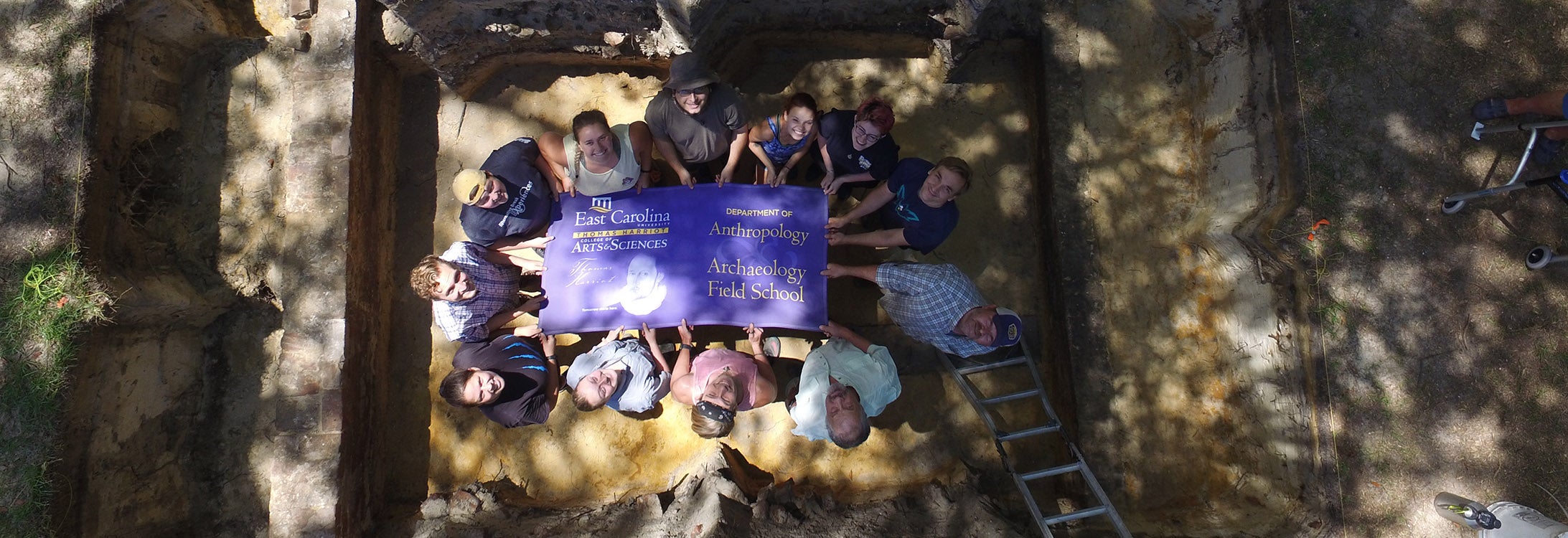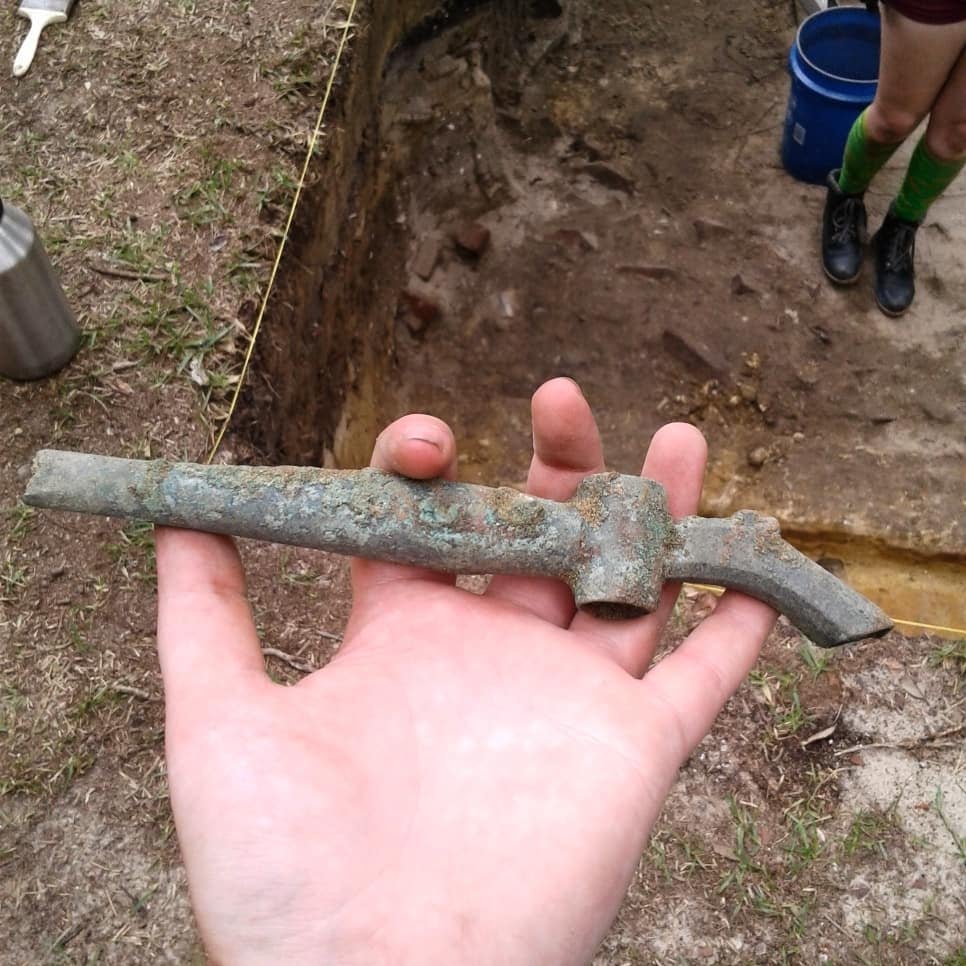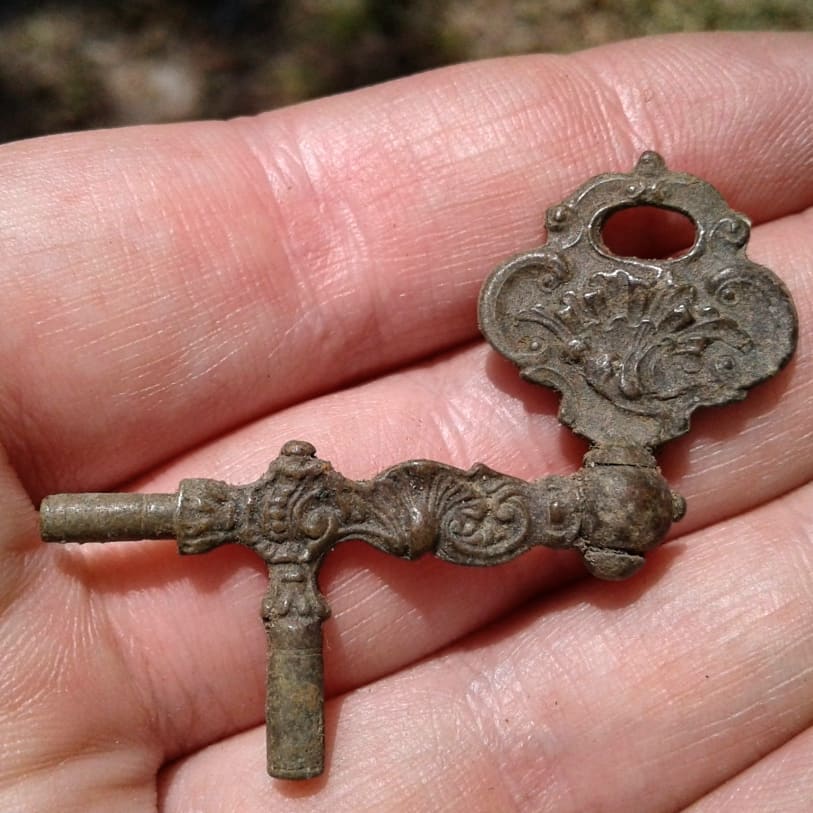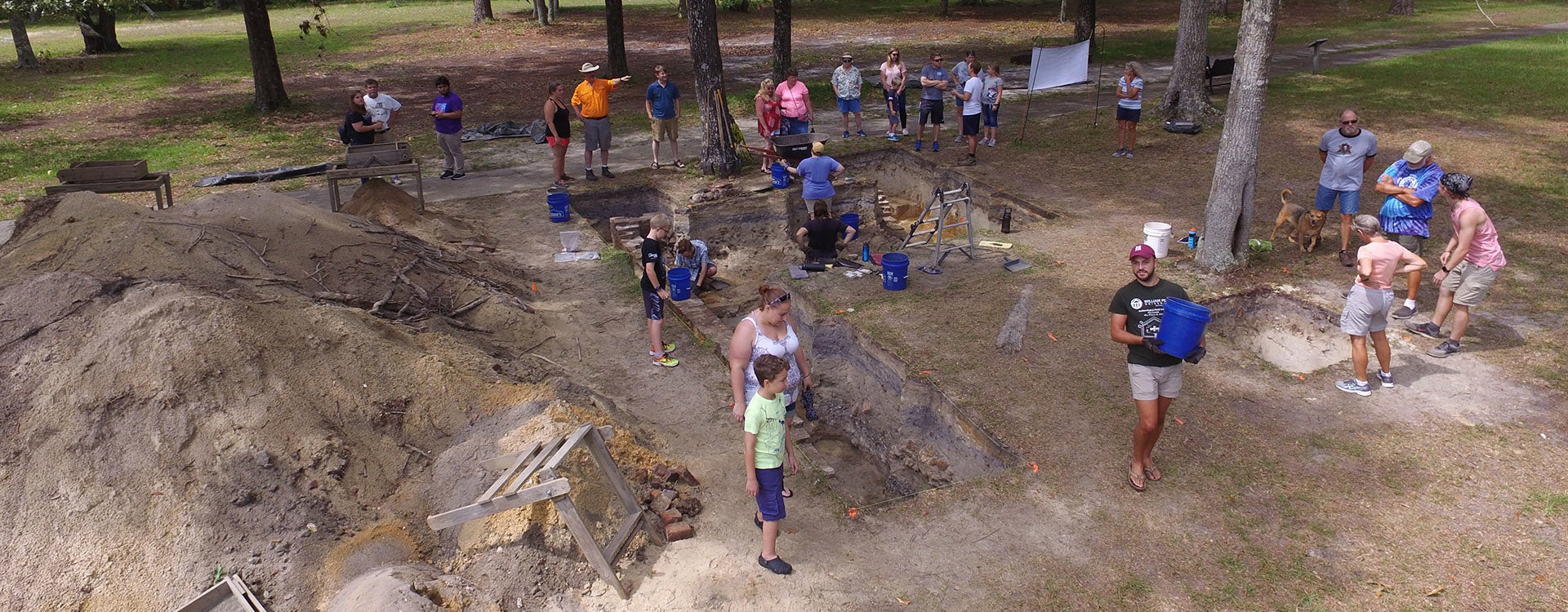THE LOST TAVERN
Students unearth a colonial tavern
College students discovering a drinking establishment isn’t anything new. But this one isn’t your everyday bar.
Last year at the ruins of Brunswick Town, North Carolina — a once-thriving colonial port burned by British soldiers in 1776 and never rebuilt — East Carolina University doctoral student Matt Harrup found the remains of a tavern no one knew about.
Equipped with ground-penetrating radar, Harrup had unveiled a tavern – some speculate it could also have served as a brothel – measuring roughly 400 square feet and buried under 5 feet of leaves and soil. It was on a spot of land that should have been empty, according to historic maps of the town.
Now, following a monthlong excavation by ECU students on a summer field class, experts say the building probably burned down years before Brunswick Town proper, its walls caving in to seal and preserve untouched artifacts from colonial America.
(Drone video courtesy of Drew Conca, Brunswick Town Historic Site)
“It’s something every archaeologist hopes to find,” Charles R. Ewen, an ECU professor of anthropology and project supervisor, told the Raleigh News & Observer. “It’s a snapshot in time. Everything there got trapped.” And he discounted the brothel talk.
“The building is 15 by 25 feet, so not sure how much ‘activity’ could be happening inside,” he said.
But the artifacts his students found, he said, are like a “time capsule” of the old port’s history on the west bank of the Cape Fear River off N.C. 133 between Wilmington and Southport.
Land records suggest mariner Edward Scott built the structure in the mid-1730s to early 1740s, and it operated for 30 years before an apparently accidental fire destroyed it, officials said.
The tavern does not appear on French cartographer Claude Joseph Sauthier’s 1769 map of Brunswick Town. Ewen said it might have burned before the map was made. An Irish halfpenny, dated 1766, found at the site might suggest how late the building was there.
The tavern is unusual in other ways. Unlike most buildings in the town, its short side faces the street, while its long side faces the river, about 300 yards away. Also, the foundations are brick. Most every other structure in Brunswick Town had foundations of ballast stone.
Ewen, who has been working at Brunswick Town since he was a graduate student, guessed the bricks might have come from nearby brickworks, or they might have arrived at the site as ship ballast. Chemical tests should provide clues on where they originated, he added.
Master’s students Kimberly Byrnes (who’s since graduated) and Brandon Eckert supervised the 10 undergraduates who worked on the site in May and June. Among other artifacts, they found nails, shards of Delft china, the winding key and glass from a pocket watch and a pair of cufflinks.
After finishing the dig, students covered the site with plastic and dirt. Signs will mark it, and work will continue next summer to find the building’s chimney, Ewen said.
South Carolina planter Maurice Moore settled Brunswick Town in 1726. It prospered during the colonial era as a shipping point for naval stores (tar, pitch and turpentine).
Traditional interpretations believe the town died off soon after the British soldiers burned it. The area, however, might have remained active well into the 1820s.
“Oh, the ‘important’ people may have moved to Wilmington, but laborers remained here, many of them slaves,” Ewen told the Star News of Wilmington. “We’d like to know more about them.”
He said only about 25 percent of Brunswick Town has been excavated, including most of what might be called the commercial district.
“We don’t know everything about Brunswick Town,” he told the Star News. “This building wasn’t even on the map. What else of importance was gone by the time Sauthier got here?”
Ewen will talk more about the project Thursday on WUNC-FM’s “The State of Things,” which airs at noon weekdays.



